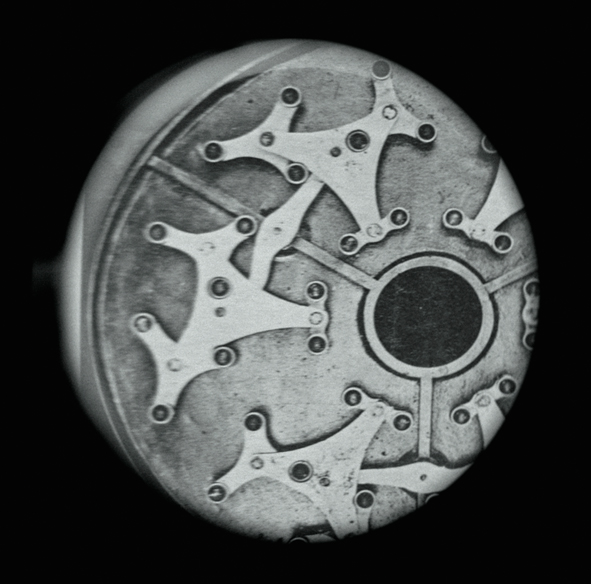CURATOR Max Delany PARTNERS Monash University Museum of Art, Melbourne; Institute of Modern Art, Brisbane OTHER VENUES Monash University Museum of Art, 18 July 2013–21 September 2013; Institute of Modern Art, 5 October–30 November 2013 PUBLICATION texts Justin Clemens, Richard Gillespie, Robert Leonard
Simon Starling is a British conceptual artist. In 2005, he won the Turner Prize for Shedboatshed, a project that involved turning a wooden shed into a boat, sailing it down the Rhine, then turning it back into a shed. In Speculum is his first Australasian survey exhibition.
Starling is celebrated for his erudite projects, which explore the legacies of modernism and globalisation, often by addressing peculiar histories surrounding specific objects of art, design, and science. But, as much as his works mine bookish backstories, there is always something unexpected, excessive, witty, perverse, serendipitous, convoluted, counter-intuitive, or crafty about them. Although they are based in fastidious research, there is madness in their method.
Take Project for a Masquerade (Hiroshima) (2010). This film is a proposition for the performance of a Noh play which would collapse Eboshi-ori (the ancient Japanese tale of a young noble boy disguising himself to escape his troubled past) onto the Cold War saga that evolved around Henry Moore’s 1965 sculpture Nuclear Energy. Installed at the University of Chicago, Nuclear Energy marks the site of Enrico Fermi’s first self-sustained nuclear reaction, Pile No. 1—the birthplace of the nuclear age and forerunner to the Manhattan Project. Somewhat bizarrely, a smaller version of this work later ended up in the collection of the Hiroshima City Museum of Contemporary Art under a different name, Atom Piece. Roles in the Noh play are taken by odd characters, including James Bond, Anthony Blunt, Colonel Sanders, and Joseph Hirshhorn. We never see the play performed. Instead, the film shows us the making of the masks to be used in it, while the voiceover describes the plot and production. In an antechamber, two masks based on Moore’s sculpture confront one another.
In Speculum also includes Le Jardin Suspendu (1998), which developed out of Starling’s first Australian show, at Melbourne’s Museum of Modern Art at Heide; Wilhelm Noack oHG (2006), an elaborate, towering, helical steel structure which carries a 35mm film loop documenting the German engineering workshop in which it was fabricated; and Black Drop (2012), a film interweaving the lives of Captain James Cook (who observed and recorded the transit of Venus across the sun from the island of Tahiti in 1769) and French astronomer Pierre-Jules-César Janssen (who invented a chronophotographic device to document the 1874 transit, a precursor to the movie camera). Starling also developed a new photographic work for the show, based on the Great Melbourne Telescope, currently being restored at Museum Victoria.
There is a common thread. All the works in the show are somehow concerned with places of making, with studios or workshops. Project for a Masquerade (Hiroshima) encompasses a maskmaker’s studio, a film-editing suite, a metal-working workshop, and Starling’s own artist’s studio. Another work, Three White Desks (2008–9), links a famous writer’s desk, a famous artist’s studio, and three cabinetmakers’ workshops. The processes associated with such places are offered as analogies for ways of conceptualising the world.


















































